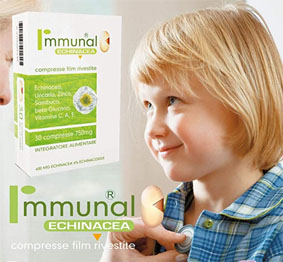JOSR Journal of Dental and Medical Sciences (IOSR-JDMS) e-ISSN: 2279-0853, p-ISSN: 2279-0861.Volume 16, Issue 5 Ver. XII (May. 2017), PP 68-70www.iosrjournals.orgDOI: 10.9790/0853-1605126870www.iosrjournals.org 68| Page

Texia Research ¹, Lorenzo Martini²
¹Texia Research-Eu-TURIN, ² Department of Pharmaceutical Biotechnologies University of Siena
[/vc_column_text]Abstract
Keywords: Athlete’s foot, Tinea pedis,Staphylococcus aureus, Neem oil, Silver citrate.I.
[/vc_column_text]Background
Chalmer (1) in 1972 referred that in 348 individuals examined in a Civic Hospital suffering from Athlete’s foot, 40.8% of them was affected by Tinea pedis.The remnant of patients showed the presence of Tricophyton interdigitale (50%), Tricophyton rubrum (26%), Epidermophyton floccosum (0.7%), bacteria Gram + (4.1%), bacteria Gram+ and Gram-(11.7%) and other bacteria not well identifiable (7.5%).This means that 23.3% of adiagnosed Athletes’foot is accompanied by bacterial affections (especially Staphylococcus aureus) (2) and all these cases corresponded to people who had not treated exhaustively the fungal infection since the very first occurrence. Generally sportmen suffer from Athlete’s foot and begin to treat this malaise using antifungal products acquired in pharmacies or drugstores, but there is an avalanche of individuals who for sake of their job and cause of lack of time, do not treat the very first occurrence ofthe fungal infection, so, after some weeks, bacterial infections occur and the problem becomes severe and difficult to be treated.The symptoms are the following:itching, stinging, and burning between the toesitching, stinging, and burning on the soles of the feetblisters on the feet that itchcracking and peeling skin on the feet, most commonly between the toes and on the solesdry skin on the soles or sides of the feetraw skin on the feetdiscolored, thick, and crumbly toenailstoenails that pull away from the nail bed.Generally these individuals are women and men who are forced to wear amphibian work boots, sometimes for 8-12 hours continuously, in winter or in summer (foresters, fire-fighters, security guards,some special cops and others).Whenthe disease is dogged, precautionsand preventionsas foot care and hygiene (foot-baths,foot-powders,sprays or emulsions) result utterly unuseful.Intention of our study is to compare the efficacy of an ancient recipe(Dr.Castellani’s Pediluvium; a solution of tartaric acid 10% and sodium thiosulfate 5% to be used as foot-bath) that boasts of the triple activities: keratolytic,antimycotic and antibacterial in some volunteers andindeed the alternate usage of two new emulsions, the former that guarantees an antimycotic function and the latter an antibacterial ability (owing to the massive presence of Melia azadirachta oil and Silver citrate)(3,4)on another panel group of people who suffer from Athlete’s foot with bacterial assault. (identified as Staphylococcus aureus).
The two creams contained:the former:
Clotrimazole, Ciclopirox Olamine, Urea, Panthenol, Hydrolized Soy Protein,, Zinc Gluconate,, Tridecyl Salicylate,, Hydrolized Soy Protein
And The Latter:, Cera Alba, Ceresin, Bisabolol, Melia Azadirachta, Seed Oil, Sodium Hyaluronate, Silver Citrate, Chloroxylenolo
[/vc_column_text]Materials and Methods
We have recruited 6 (six) volunteers (one security guard female, two security guards male, one fireman, two foresters, one emergency physician) and we have shared the 6 people in two panel groups:
A)Security guard male
B)Fireman
C)ForesterAnd
D)Security guard female
E)Forester
F)Emergency physician
And we have treated the first group with the Castellani’s Pediluvium till all the symptoms of Athlete’s foot disappear, evaluating the successes obtianed by a scale that goes from nil to 10 during the days of treatment, and we have treated the second group mixing together the two emulsions (the trade marks are reported in section “Aknowledgements”).We have continued the applications of the two remedies on the two panel groups until the final remission (nine days for the first panel group, 4-5days for the first panel group).
Results:
Here follow 6 tables where all the scores (both subjective and objective) are plotted during the 9 days of treatment in both panel groups.In Table I it is possible to observe the scores for nil to 10 the patients themselves attributed to the feeling of their symptoms (and the score has been approved by our objective examination)
III.[/vc_column_text]Results
We can assert with no doubt that the first panel group, treated by the Castellani’sPediluvium (a saturated solution of tartaric acid and sodium thiosulfate) necessitated nine days for a complete remission and almost no sign of ameliorating of the disease was evident till the end of the treatment.The three components of the second group showed bright results after the 4th-5th day, depending on the severity of the bacterial infection they suffered from.
IV.[/vc_column_text]Discussions and conclusion
It is indisputable that high dosages of antimycotic agents mixed with Melia azadirachta seed oil (Neem) and Silver citrate (that actas strongest antimicrobic) are more efficient than antic and/orantique remedies
[/vc_column_text]Acknowledgments
[/vc_column_text]References




